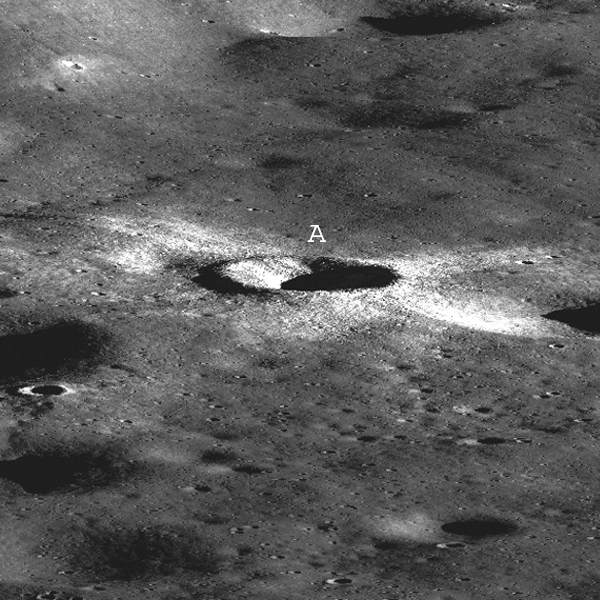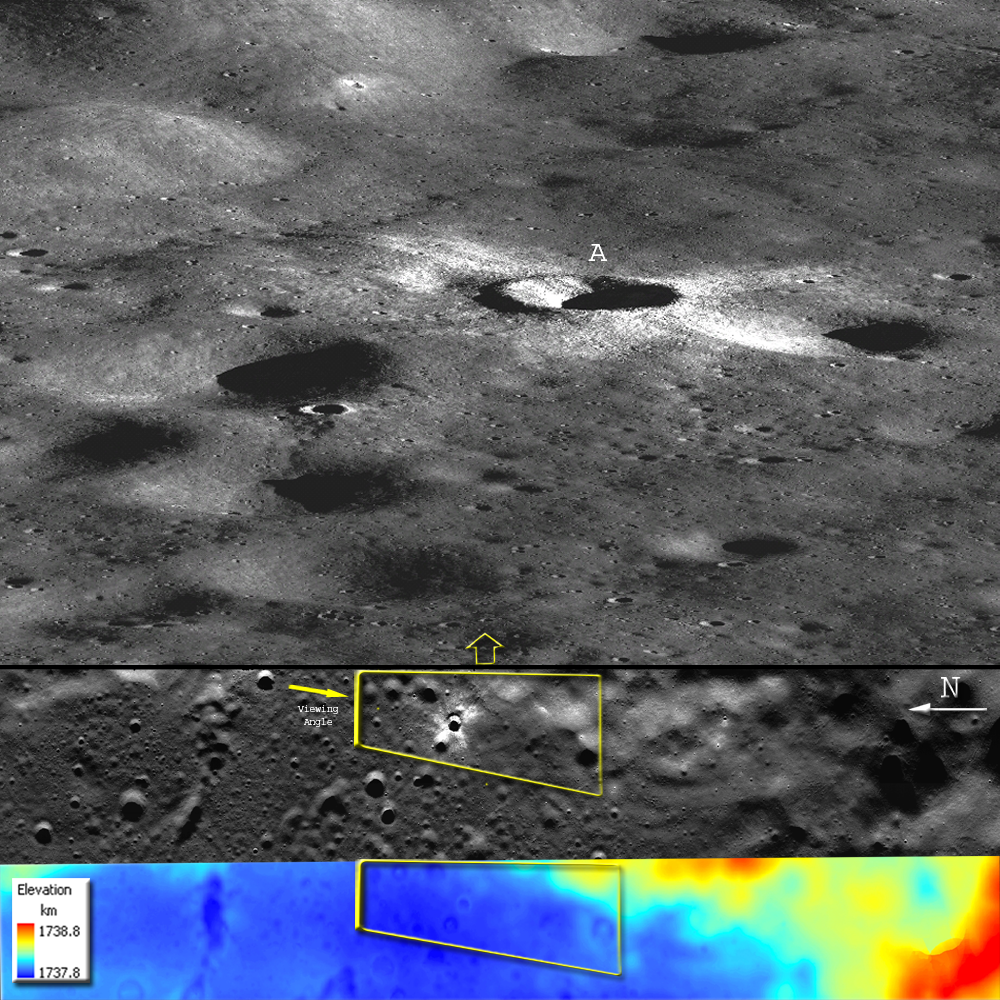
LROC has the ability to acquire stereo views by imaging a target from two separate orbits at different viewing angles. Typically stereo pairs are acquired from adjacent orbits to minimize changes in lighting conditions. Computer methods allow very accurate measurements of parallax between features of the two images, from which topographic maps are made. Such maps are termed digital elevation models, commonly called DEMs.
The area covered by this stereo pair shows the topography seen by the Apollo 16 astronauts, including rolling plains with many impact craters. The 3-D DEM is colored showing elevations, ranging over about 1-kilometer. South Ray crater (A) in the perspective view is 750 meters in diameter and approximately 70 meters deep. The surrounding craters range from several meters in diameter to 1,200 meters. The tallest mountain in the southwest corner (lower right) of the DEM is 880 meters above the plain.
The DEM area [NAC images M102064759 and M102057602; centered at 9° S, 15.4° E] is 50 km long and 7 km wide. The LROC images were taken on July 12, 2009 during LRO orbit 218, near the Apollo 16 landing site. Images were processed using software developed by the Mapping and GIS Laboratory at the Ohio State University.
Published by Mark Robinson on 25 August 2009
